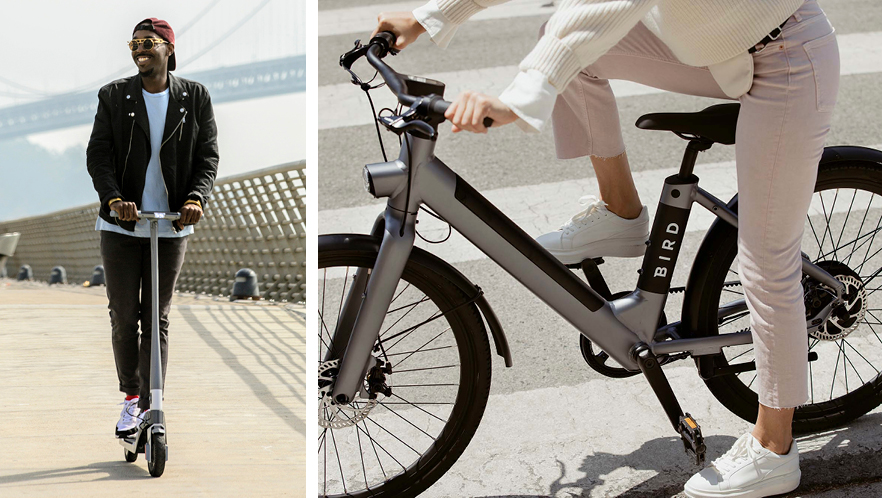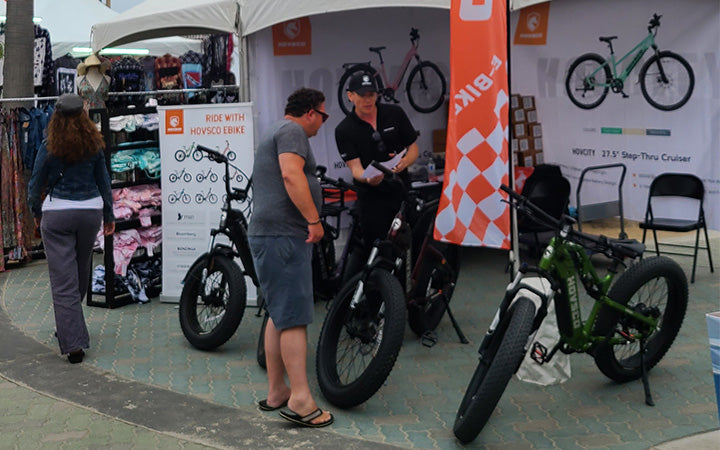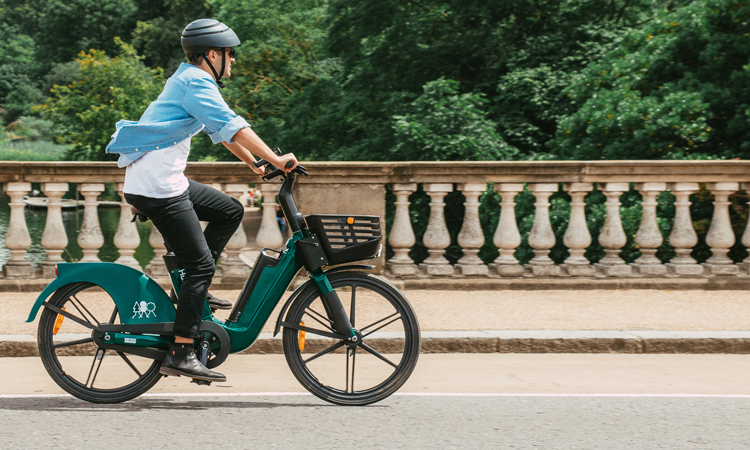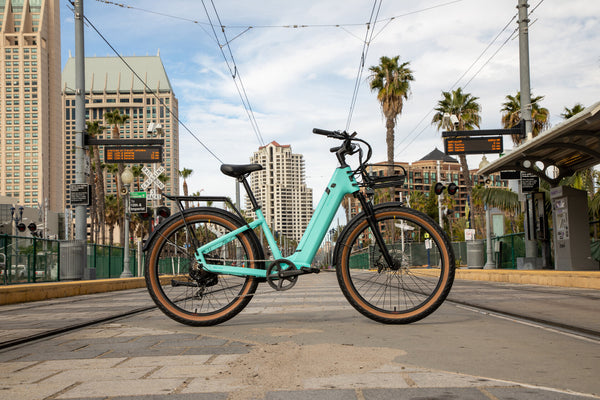Are you new to the world of e-bike commuting and looking for some helpful tips to make your rides smoother and more enjoyable? Look no further! In this series of informational posts, we aim to provide you with all the necessary knowledge and practical advice to unlock the full potential of sustainable transportation. Whether you’re riding your e-bike in the city or off-road, our beginner-friendly tips will help you ride with confidence and navigate various environments with ease. Say goodbye to traffic congestion and hello to a greener, more efficient way of getting around – let’s dive in!
1. Choosing the Right E-Bike
Electric bikes, or e-bikes, are becoming increasingly popular as a sustainable mode of transportation. If you’re considering joining the e-bike revolution, it’s important to choose the right bike for your needs. Here are some factors to consider when selecting an e-bike:
Consider Your Commuting Needs
Before purchasing an e-bike, think about your typical commuting distance and terrain. Are you going to be riding mostly on flat roads or will you encounter hills? Do you have a long commute that requires a bike with a longer battery range? Understanding your commuting needs will help you determine the type of e-bike that is best suited for you.
Understand the Different Types of E-Bikes
There are several types of e-bikes available, each designed for different purposes. Some common types of e-bikes include city/urban e-bikes, mountain e-bikes, and folding e-bikes. City e-bikes are ideal for commuting in urban areas, while mountain e-bikes are built for off-road adventures. Folding e-bikes are compact and convenient for those with limited storage space. Research the different types of e-bikes to find the one that aligns with your commuting needs.
Determine Your Budget
E-bikes come in a wide range of prices, so it’s important to determine your budget before starting your search. Consider how much you are willing to spend and what features are important to you. Keep in mind that investing in a higher-quality e-bike might be worth it in the long run for reliability and durability.
Consider the Battery Range
The battery range of an e-bike determines how far you can travel on a single charge. If you have a long commute or plan to take longer rides, it’s essential to choose an e-bike with a battery range that can accommodate your distance needs. Take into account factors such as terrain and rider weight, as these can affect the battery range.
Test Ride Several E-Bikes
Once you have a good understanding of your commuting needs, the different types of e-bikes, your budget, and battery range requirements, it’s time to test ride a few options. Testing out different e-bikes will give you a sense of their comfort, handling, and overall performance. Pay attention to how the bike accelerates, brakes, and handles turns. This hands-on experience will help you choose the e-bike that feels the most comfortable and suits your riding style.
2. Safety Gear for E-Bike Commuting
Safety should always be a top priority when e-bike commuting. Here are some essential safety gear items to consider:
Wearing a Helmet
A helmet is the most important piece of safety gear for any cyclist. It protects your head in the event of a fall or collision. Make sure to choose a helmet that fits properly and meets safety standards. Look for certifications such as CPSC (Consumer Product Safety Commission) or ASTM (American Society for Testing and Materials).
Choosing Appropriate Clothing
Wearing appropriate clothing can enhance your safety and comfort while e-bike commuting. Opt for clothing that is visible to other road users, especially during low-light conditions. Bright colors and reflective materials can help increase your visibility.
Using Reflective Gear
In addition to reflective clothing, consider using reflective gear such as reflective vests, ankle bands, or stickers. These items make you more visible to drivers, especially at night or in dark conditions.
Installing Lights and Reflectors
Ensure that your e-bike is equipped with proper lights and reflectors. Front and rear lights improve your visibility to other road users, while reflectors on the pedals, wheels, and frame help alert drivers to your presence.
Considering Protective Eyewear
Protective eyewear, such as sunglasses or clear glasses, can shield your eyes from debris, wind, and UV rays. This is especially important if you plan on riding at higher speeds or in areas with a lot of dust or insects.

This image is property of corporate.bestbuy.com.
3. Planning Your E-Bike Commute
Proper planning is essential for a smooth and enjoyable e-bike commute. Here are some key considerations:
Mapping Your Route
Before you start your e-bike commute, spend some time mapping out your route. Consider factors such as distance, traffic conditions, and road quality. Use online map services that cater specifically to cyclists, as they often provide bike-friendly routes and information about bike lanes or shared paths.
Considering Bike-Friendly Infrastructure
Look for bike-friendly infrastructure such as dedicated bike lanes or paths, if available. These routes can offer a safer and more pleasant commuting experience. Familiarize yourself with local cycling laws and regulations to ensure you understand your rights and responsibilities as an e-bike rider.
Identifying Charging Stations
If your e-bike battery has limited range and your commute is longer than a single charge, it’s important to identify charging stations along your route. Some cities have dedicated charging stations for e-bikes, while others may allow you to charge your e-bike battery at public outlets. Plan your route accordingly to make use of these facilities if needed.
Finding Secure Parking
Ensure that you have a secure place to park your e-bike while you are at work, school, or other destinations. Look for bike racks or designated bike parking areas that are well-lit and preferably within view of security cameras. Investing in a high-quality lock will also deter potential thieves.
Researching Local Regulations
Familiarize yourself with local regulations regarding e-bike commuting. Laws can vary from region to region, so it’s important to understand the rules and restrictions that apply to your specific area. Pay attention to speed limits, bike lane usage, and any other regulations pertaining to e-bikes. Being aware of these regulations will help you ride safely and avoid any potential legal issues.
4. Riding Techniques for E-Bike Commuting
Proper riding techniques can enhance your safety and enjoyment while e-bike commuting. Here are some tips to keep in mind:
Starting and Stopping Smoothly
When starting from a stop, use a smooth and controlled acceleration to maintain balance. Gradually build up your speed rather than abruptly accelerating. When coming to a stop, brake gently and shift your weight slightly backward to maintain stability.
Maintaining a Consistent Speed
Maintaining a consistent speed can help you ride more efficiently and predictably. Avoid sudden accelerations or decelerations unless necessary. By maintaining a steady pace, you can better anticipate traffic flow and adjust accordingly.
Using Proper Hand Signals
Hand signals are an essential communication tool for cyclists. Use hand signals to indicate your intentions to other road users. Extend your left arm straight out to indicate a left turn, bend it at a 90-degree angle upward to indicate a right turn, and point downward with your left arm to indicate stopping or slowing down.
Navigating Traffic
Be aware of your surroundings and practice defensive riding techniques when navigating through traffic. Stay in designated bike lanes whenever possible and obey traffic signals and signs. Look out for parked cars and opening doors, and always be prepared for sudden changes in traffic flow.
Being Mindful of Pedestrians
Share the road and be respectful of pedestrians. Slow down when approaching crosswalks or crowded areas and give pedestrians the right of way. Avoid riding on sidewalks unless it is allowed and always yield to pedestrians when using shared paths.

This image is property of cdn.shopify.com.
5. Maintaining Your E-Bike
Proper maintenance is crucial to keep your e-bike in optimal condition. Regularly checking and maintaining key components will ensure a safe and reliable ride. Here are some maintenance tips:
Regularly Check the Tire Pressure
Maintain the proper tire pressure as recommended by the manufacturer. Underinflated tires can affect your ride quality and handling, while overinflated tires can lead to reduced traction and an uncomfortable ride.
Perform Routine Cleaning
Regularly clean your e-bike to keep it free from dirt, grime, and debris. Use a soft sponge or cloth and mild detergent to clean the frame, wheels, and any other exposed parts. Avoid using high-pressure washers, as they can damage sensitive components.
Inspecting Brakes and Cables
Regularly inspect your e-bike’s brakes and cables for wear and tear. Check brake pads for any signs of damage or excessive wear and replace them if necessary. Ensure that brake cables are properly adjusted and functioning smoothly.
Lubricating the Chain
Apply lubricant to the chain regularly to keep it running smoothly. Use a chain lubricant specifically designed for bikes and apply it evenly along the length of the chain. Wipe off any excess lubricant to prevent attracting dirt and debris.
Checking Battery Health
Monitor the health of your e-bike battery regularly. Follow the manufacturer’s guidelines for battery maintenance, such as proper storage procedures and charging habits. If you notice any significant decrease in battery performance or unusual behavior, consult a professional for assistance.
6. Maximizing Battery Life
To maximize the battery life of your e-bike, follow these guidelines:
Understanding Battery Charging Guidelines
Refer to the manufacturer’s recommendations for charging your e-bike battery. Overcharging or undercharging can affect its lifespan and performance. Follow the suggested charging times and avoid leaving the battery completely discharged for extended periods.
Avoiding Extreme Temperatures
Extreme temperatures, both hot and cold, can negatively impact your e-bike battery. Avoid exposing the battery to excessive heat or cold for prolonged periods. If possible, store your e-bike in a temperature-controlled environment.
Optimizing Riding Modes
Many e-bikes offer different riding modes, such as eco, normal, and sport. Experiment with different modes to find the most efficient one for your commuting needs. Using the appropriate mode can help conserve battery power and extend the range.
Using Regenerative Braking
Some e-bikes are equipped with regenerative braking technology, which converts kinetic energy into electrical energy to recharge the battery. Take advantage of this feature by using the brakes and descending hills whenever possible.
Avoiding Frequent Full Discharges
Avoid frequently discharging the battery completely. Instead, aim to keep the battery charge level between 20% and 80%. This practice can help prolong the overall lifespan of your e-bike battery.

This image is property of www.intelligenttransport.com.
7. Staying Comfortable during E-Bike Commutes
Riding an e-bike should be a comfortable and enjoyable experience. Here are some tips to help you stay comfortable during your e-bike commutes:
Adjusting Seat and Handlebars
Properly adjusting the seat and handlebars of your e-bike can greatly improve your riding comfort. Find the right seat height that allows your legs to fully extend while pedaling. Adjust the handlebars to a position that feels natural and minimizes strain on your wrists and shoulders.
Investing in Suspension
Consider investing in an e-bike with suspension, especially if you frequently encounter rough or uneven terrain. Suspension forks or seat posts can absorb shocks and vibrations, reducing fatigue and improving overall comfort.
Considering Padded Shorts
Padded cycling shorts can provide additional cushioning and prevent chafing during longer rides. They are designed to reduce discomfort and pressure points, making your e-bike commute more enjoyable.
Using Ergonomic Grips
Ergonomic grips are designed to reduce hand fatigue and numbness by providing better support and distributing pressure evenly. Invest in quality ergonomic grips to enhance your comfort while riding.
Installing Fenders and Mudguards
Fenders and mudguards help protect you from mud, water, and other debris that may be kicked up by the wheels. They keep you and your bike cleaner, preventing unwanted splashes and stains. Look for fenders that are compatible with your e-bike model.
8. Weather Considerations for E-Bike Commuting
When e-bike commuting, you may encounter various weather conditions. Here are some tips to consider for different weather scenarios:
Preparing for Rain
Invest in waterproof clothing and gear, such as rain jackets, pants, and shoe covers. Consider adding fenders to your e-bike to keep water from splashing onto you. Use lights and reflective gear to enhance your visibility during rainy weather.
Dealing with Hot Conditions
In hot weather, opt for breathable and lightweight clothing to stay cool. Wear sunscreen and a hat to protect yourself from the sun’s rays. Stay hydrated by carrying a water bottle or hydration pack.
Protecting Yourself from Cold
In colder temperatures, layer your clothing to trap heat and insulate your body. Use thermal or windproof jackets, gloves, and leg warmers to keep warm. Wear a thermal or moisture-wicking base layer to regulate body temperature and avoid sweating.
Understanding Wind Factors
Strong winds can affect your stability and speed while riding. Be prepared for gusty conditions by keeping a firm grip on the handlebars. Consider adjusting your route to minimize the impact of headwinds or crosswinds.
Appropriate Attire for Different Weather
Always dress appropriately for the weather conditions you will encounter during your e-bike commute. Staying comfortable and protected will enhance your overall experience and make your ride more enjoyable.

This image is property of cdn.shopify.com.
9. Securing Your E-Bike
Protecting your e-bike from theft should be a top priority. Here are some strategies to secure your e-bike:
Using a High-Quality Lock
Invest in a high-quality lock to secure your e-bike when parked. A sturdy U-lock or chain lock can deter opportunistic thieves. Always lock your e-bike to a secure structure, such as a bike rack or sturdy pole.
Opting for GPS Tracking
Consider using GPS tracking devices specifically designed for bikes. These devices can help locate your e-bike if it gets stolen, increasing the chances of recovery. Make sure to register your e-bike and activate the tracking feature.
Registering Your E-Bike
Register your e-bike with the local authorities or online databases. This can assist in recovery efforts in case of theft and provide proof of ownership if needed.
Using Indoor Bike Storage
Whenever possible, store your e-bike indoors or in a secure area. This reduces the risk of theft and protects your e-bike from the elements. Use a sturdy bike rack or wall mount to keep your e-bike organized and easily accessible.
Considering Insurance Coverage
Investigate insurance options for your e-bike. Some insurance companies offer specialized coverage for e-bikes, protecting you against theft, damage, and liability. Research different insurance providers to find a policy that suits your needs.
10. Joining a Community of E-Bike Commuters
Joining a community of e-bike commuters can be a great way to connect with like-minded individuals and gain valuable insights. Here are some ways to get involved:
Local E-Bike Clubs and Groups
Search for local e-bike clubs or groups in your area. These organizations often host group rides, social events, and educational workshops. Joining a club can provide opportunities to meet fellow e-bike enthusiasts and share experiences.
Participating in Group Rides
Take part in organized group rides to explore new routes, learn from experienced riders, and discover e-bike-friendly locations. Group rides can be a fun way to connect with others and gain confidence in your e-bike skills.
Online Forums and Social Media
Engage in e-bike-related online forums, social media groups, and communities. These platforms allow you to connect with riders from around the world, ask questions, and share tips and experiences. You can also stay updated on the latest e-bike news and developments.
Sharing Experiences and Tips
Share your own e-bike experiences and tips with others. Whether it’s through blog posts, personal social media accounts, or online forums, your insights can help newcomers to the e-bike world navigate their own experiences.
Learning from Experienced Riders
Learn from riders who have extensive e-bike experience. Seek their advice on e-bike maintenance, riding techniques, and safety precautions. Their knowledge can help you become a more confident and informed e-bike commuter.
By following these tips and guidelines, you can unlock the potential of sustainable transportation through e-bike commuting. Enjoy the freedom, convenience, and environmental benefits that come with riding an e-bike, and make the most of your e-bike commuting experience.




